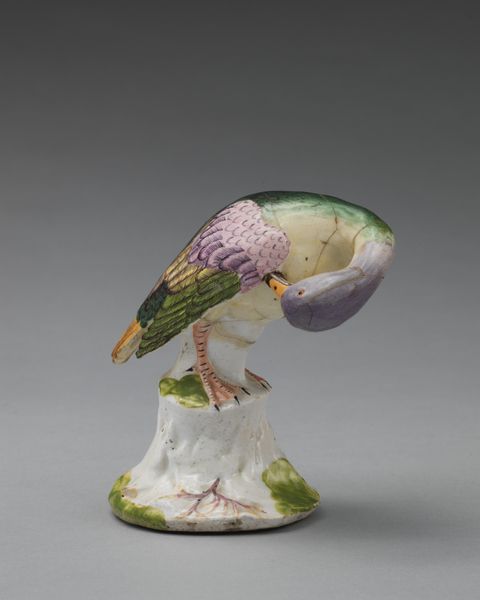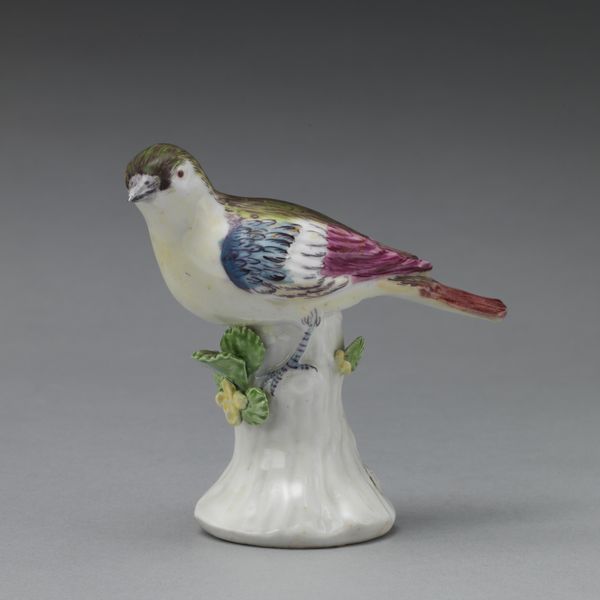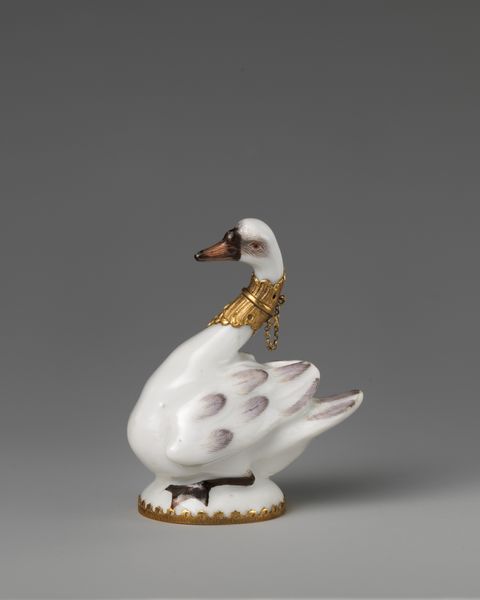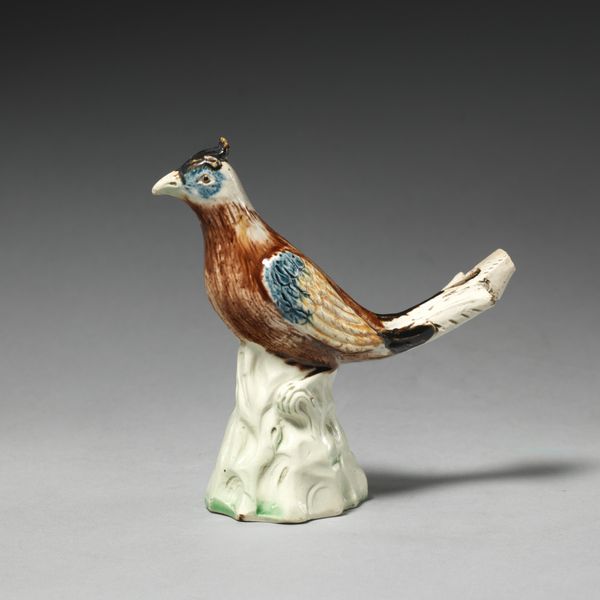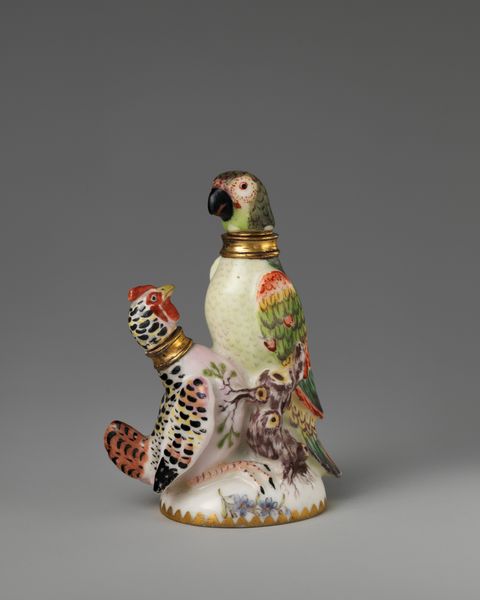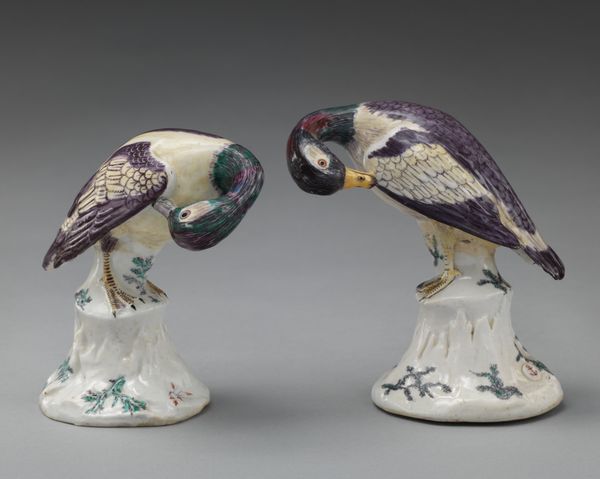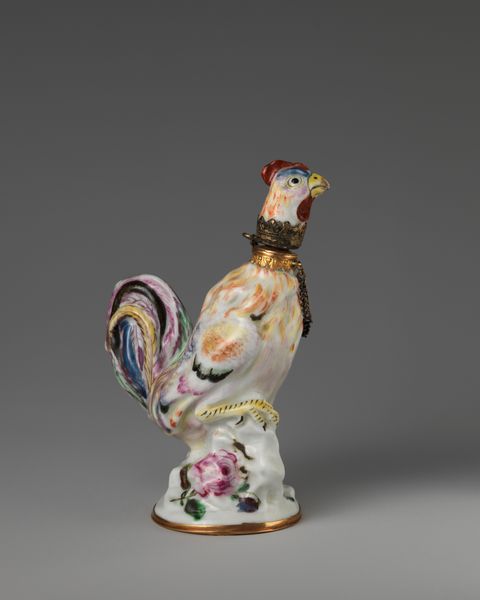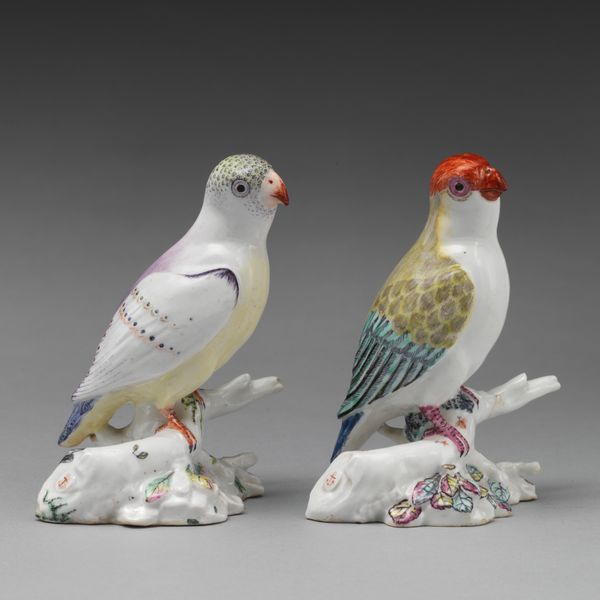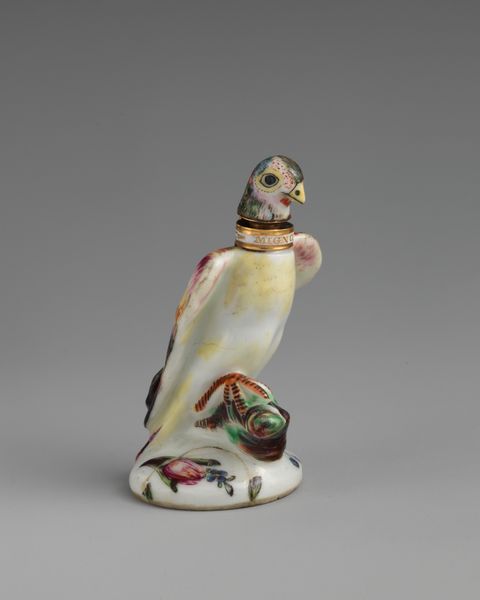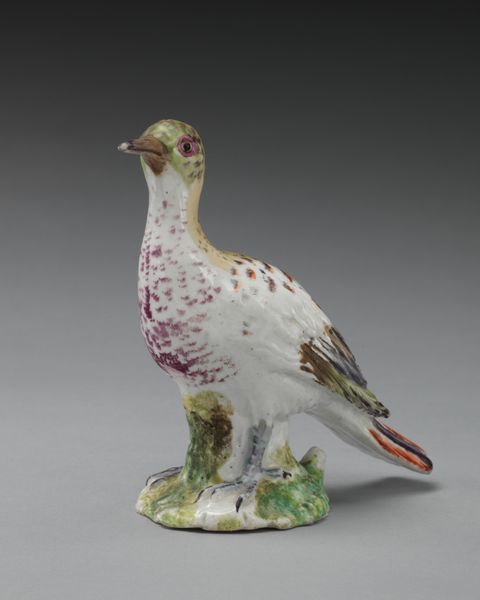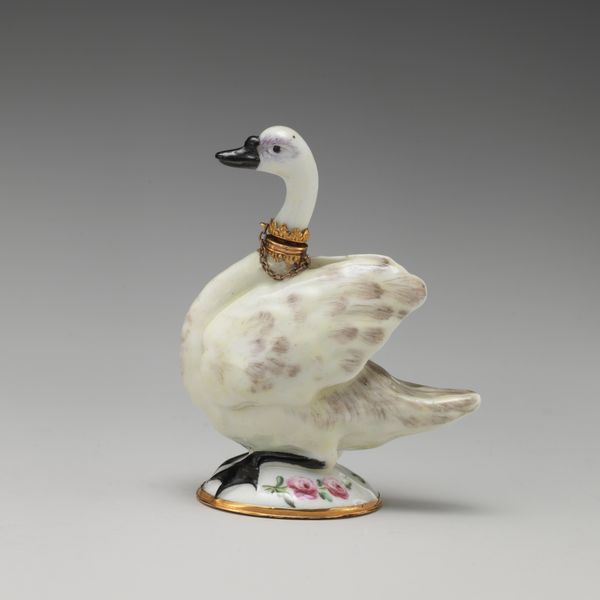
ceramic, porcelain, sculpture
#
ceramic
#
porcelain
#
figuration
#
sculpture
#
decorative-art
Dimensions: Height: 7/8 in. (2.2 cm)
Copyright: Public Domain
Editor: Here we have a porcelain sculpture of a "Parrot" made around 1745-1760 by the Saint James's Factory. It's incredibly detailed, yet feels quite small and delicate. How do you interpret this piece, especially considering its historical context? Curator: That’s a keen observation. We must consider the socio-political backdrop. This era witnessed burgeoning global trade and colonial expansion. How might the presence of an exotic bird like a parrot, meticulously rendered in porcelain, reflect Britain’s colonial ambitions and its relationship to the natural world? Editor: I see what you mean. It’s not just a pretty object, but a symbol of something larger. Like, the bird itself represents a captured piece of another land? Curator: Precisely. Luxury goods, like porcelain, were often linked to colonial exploitation. The parrot, in its vibrant otherness, becomes a decorative emblem of the Empire's reach and power. Consider how access to and control of resources were expressions of wealth and status during this time. Does that change how we look at its diminutive size? Editor: Absolutely. It makes me question the hands that created it and those who consumed it. So, this "Parrot," beyond its aesthetic appeal, invites us to think critically about power, representation, and the legacy of colonialism embedded within art. Curator: Exactly. This sculpture can serve as a catalyst for examining Britain’s evolving identity and the complicated dynamics of its interactions with the wider world. What have you learned today? Editor: How even seemingly simple artworks hold layers of social and political meaning once you begin unpacking them! Curator: And how approaching art with a critical lens can reveal those deeper truths.
Comments
No comments
Be the first to comment and join the conversation on the ultimate creative platform.
